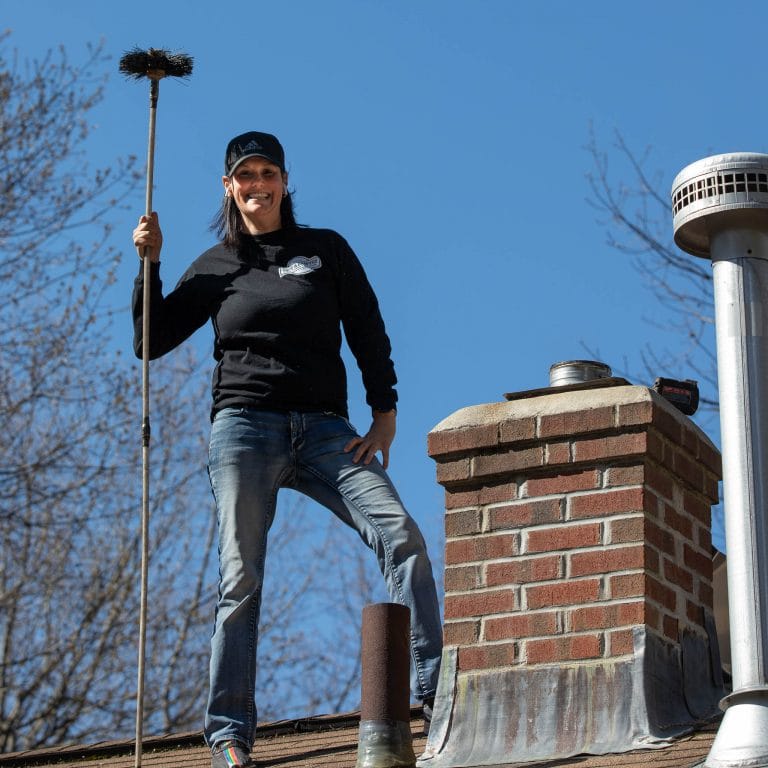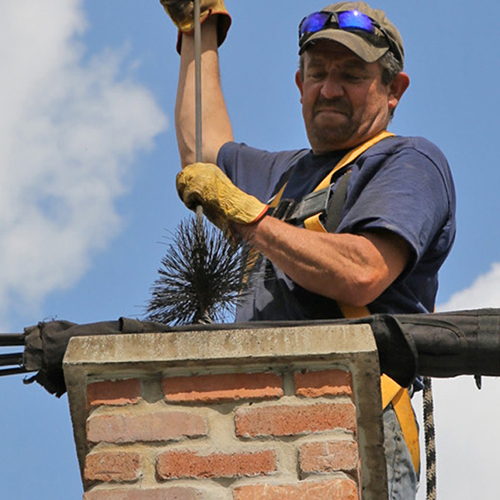Experience the Difference: Chimney Clean San Jose for a Cleaner, Safer Home
Experience the Difference: Chimney Clean San Jose for a Cleaner, Safer Home
Blog Article
Chimney Cleansing: A Step-by-Step Overview to Maintaining a Healthy And Balanced Fireplace
Regular chimney cleaning is an essential part of this upkeep regimen. By complying with these guidelines, you will discover just how to gather the necessary tools, carry out a visual evaluation, clear particles and build-up, move the smokeshaft, and finish the final steps for ongoing maintenance.
Collecting the Necessary Devices
To start the process of smokeshaft cleaning, the first action is to collect all the needed devices. Having the right devices handy ensures a secure and reliable cleaning procedure. The important tools for smokeshaft cleansing consist of a smokeshaft brush, a ladder, ground cloth or plastic sheets, a flashlight, gloves, and a dust mask.
The chimney brush is the main device made use of to remove residue and creosote build-up from the flue - Chimney Clean San Jose. It is crucial to pick a brush that matches the size and shape of your smokeshaft.
A flashlight is crucial for evaluating the smokeshaft's interior for any indicators of damages or obstructions. Gloves are required to protect your hands from soot and other dangerous compounds, while a dust mask assists stop the breathing of debris.
Executing an Aesthetic Examination

Using a flashlight, very carefully analyze the interior wall surfaces of the chimney for any kind of indicators of damages, such as fractures, loose bricks, or mortar damage. These problems can jeopardize the smokeshaft's architectural integrity and posture a serious safety threat. In addition, check for any signs of water damages, such as staining or efflorescence, as this can indicate a leaky smokeshaft cap or flashing.
Following, inspect the smokeshaft flue for any kind of blockages. Try to find the existence of nesting products, leaves, or particles that may have collected with time (Chimney Clean San Jose). These obstructions can limit airflow, boost the risk of carbon monoxide build-up, and prevent the chimney's capability to efficiently air vent smoke
Throughout the aesthetic inspection, pay close focus to the chimney crown, which is the leading surface area that safeguards the smokeshaft from wetness. Search for cracks or missing pieces in the crown, as these can allow water to get in the chimney and cause significant damages.
Clearing Particles and Build-up
After finishing the aesthetic examination, the following action in chimney cleaning entails cleaning particles and accumulation to ensure the proper performance of the fireplace. With time, debris such as fallen leaves, branches, and pet nests can collect in the chimney, obstructing the flow of air and creating prospective fire dangers. Furthermore, the accumulation of creosote, a tar-like substance, is a typical issue in chimneys. Creosote is developed when wood or nonrenewable fuel sources are melted, and otherwise gotten rid of consistently, it can bring about chimney fires.
A smokeshaft brush, particularly developed for this objective, is made use of to eliminate loose particles and creosote from the chimney wall surfaces. It is essential to select a brush that matches the dimension of your chimney to make certain reliable cleansing.
To begin, place the brush right into the smokeshaft and move it up and down, rubbing the walls to remove any particles or creosote. Utilize a sweeping activity to make certain thorough cleaning. It is suggested to begin from all-time low and function your method up. As soon as the cleaning is complete, make use of a vacuum cleanser or a chimney brush extension to remove the dislodged debris from the fireplace.

Sweeping the Chimney
The sweeping of the smokeshaft is a crucial action in preserving a healthy fireplace. Over time, soot, creosote, and other debris can collect in the chimney, obstructing the flow of air and possibly creating a harmful build-up of combustible materials. Regular chimney sweeper not only guarantees appropriate air flow yet additionally avoids the danger of smokeshaft fires.
When it comes to chimney sweeping, it is very suggested to work with an expert chimney sweeper. These experts have the expertise and tools required to safely and properly get rid of the collected debris from your smokeshaft. They will generally start by covering the fireplace to stop any kind of soot or particles from entering your home. Utilizing specific brushes and vacuum tools, they will then clean up the chimney from leading to bottom, making sure that all the accumulation is extensively gotten rid of.
It is important to note that the regularity of smokeshaft sweeping depends upon numerous aspects, such as the kind of gas made use of, the quantity of use, and the type of chimney. As a general general rule, it is advised to have your smokeshaft brushed up and examined at the very least yearly.
Final Steps and Maintenance
To guarantee ongoing maintenance and ideal efficiency, it is important to execute normal maintenance practices and follow a thorough collection of final steps for your fireplace. After finishing the smokeshaft sweeping procedure, the very first step in the last upkeep is to check the smokeshaft cap and spark arrestor. These components protect against particles, animals, and rainwater website here from entering the smokeshaft. Look for any indicators of damage or obstruction, and tidy or repair them if necessary.

Examine the within the fireplace for any indicators of damage, such as splits, loose blocks, or harmed mortar. These problems can influence the architectural honesty and safety and security of the fire place. If any type of issues are spotted, speak with a professional chimney sweeper or mason to resolve them promptly.
Finally, think about setting up carbon monoxide gas detectors near the fire place and throughout your home. These devices can spot the visibility of this harmful gas, supplying a very early caution system in situation of a smokeshaft malfunction. On a regular basis inspect and change the batteries in these detectors to ensure their performance.
Final Thought
In verdict, following a detailed guide for smokeshaft cleaning is vital in keeping a healthy fireplace. By gathering the needed tools, doing a visual inspection, clearing particles and build-up, and brushing up the smokeshaft, property owners can make certain the security and performance of their fire place. Regular maintenance and cleansing will certainly help prevent chimney fires and improve air top quality in the home. It is necessary to prioritize smokeshaft cleansing as a component of general home maintenance.
The important tools for smokeshaft cleaning include a smokeshaft brush, a ladder, decrease towels or plastic sheets, a flashlight, handwear covers, and a dirt mask.
A chimney brush, particularly created for this purpose, is utilized to eliminate loosened particles and creosote from the chimney wall surfaces. Regular chimney brushing up not only directory guarantees appropriate air flow yet additionally stops the threat of smokeshaft fires.
When it comes to smokeshaft sweeping, it is very recommended to employ a professional chimney sweep. After completing the chimney sweeping process, the very first step in the last maintenance is to evaluate the smokeshaft cap and trigger arrestor.
Report this page